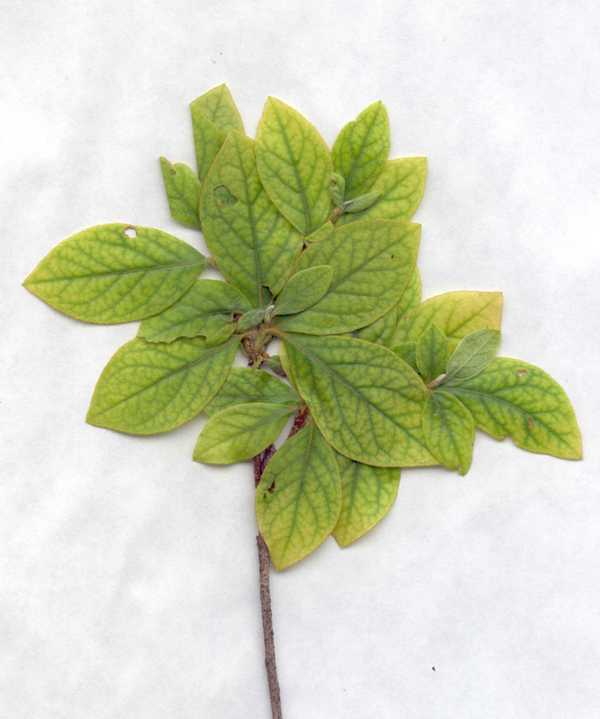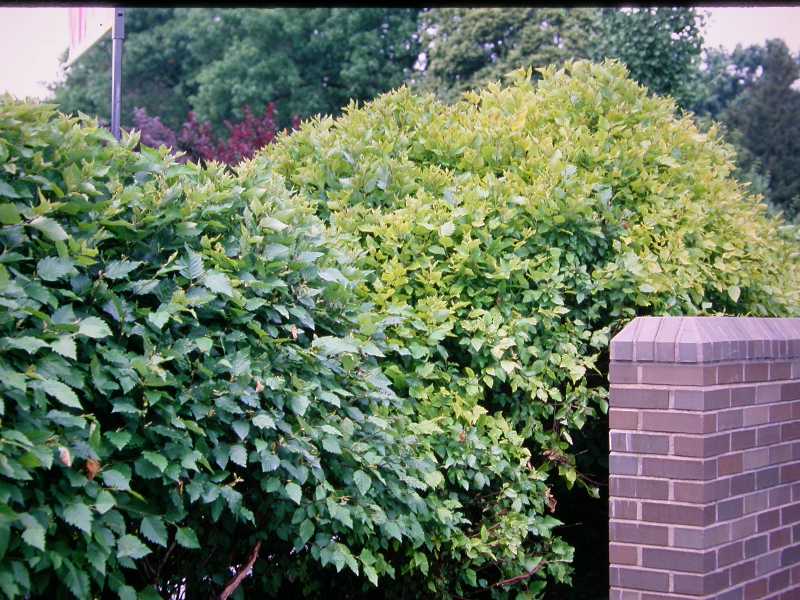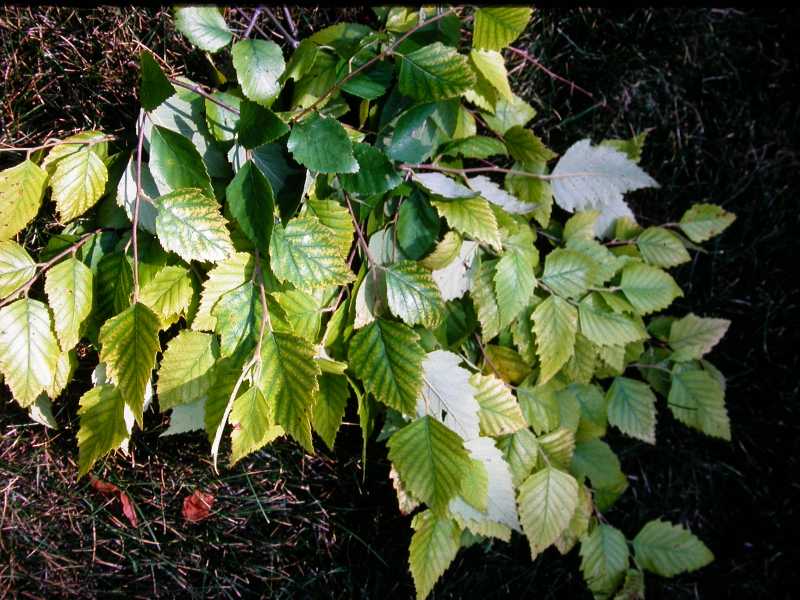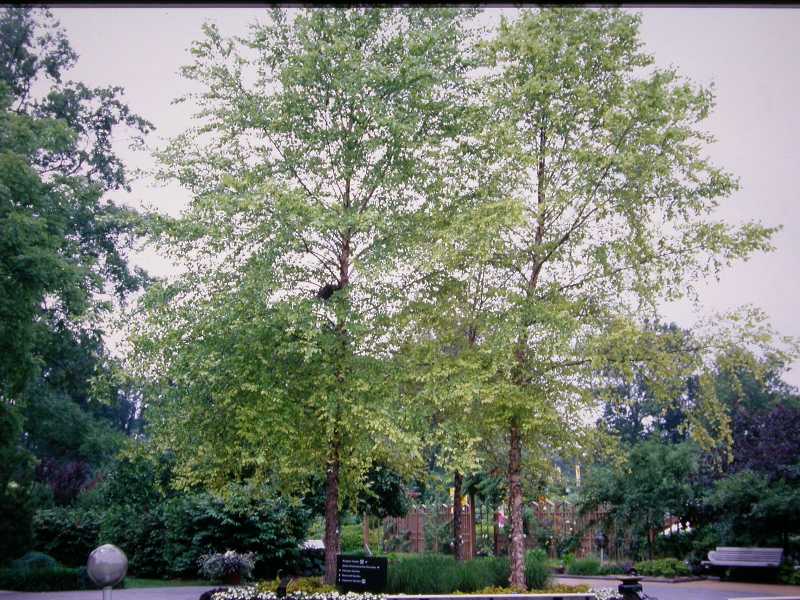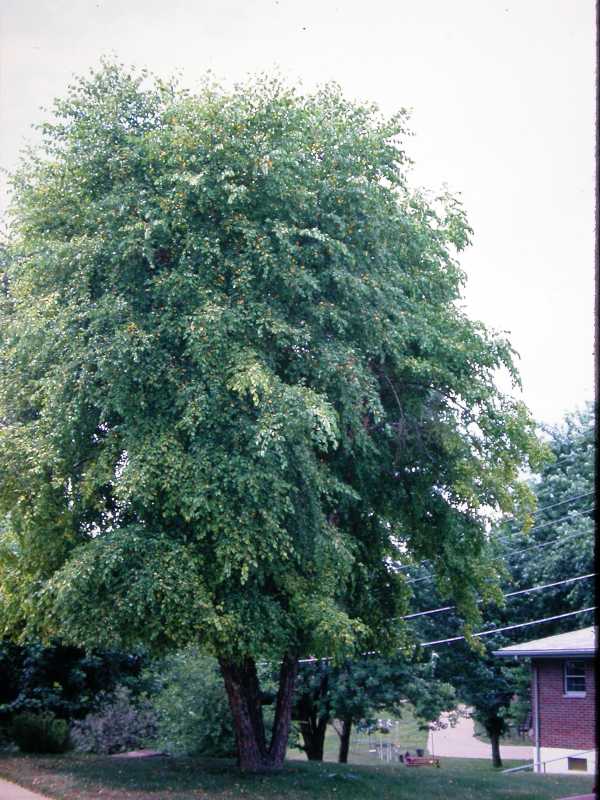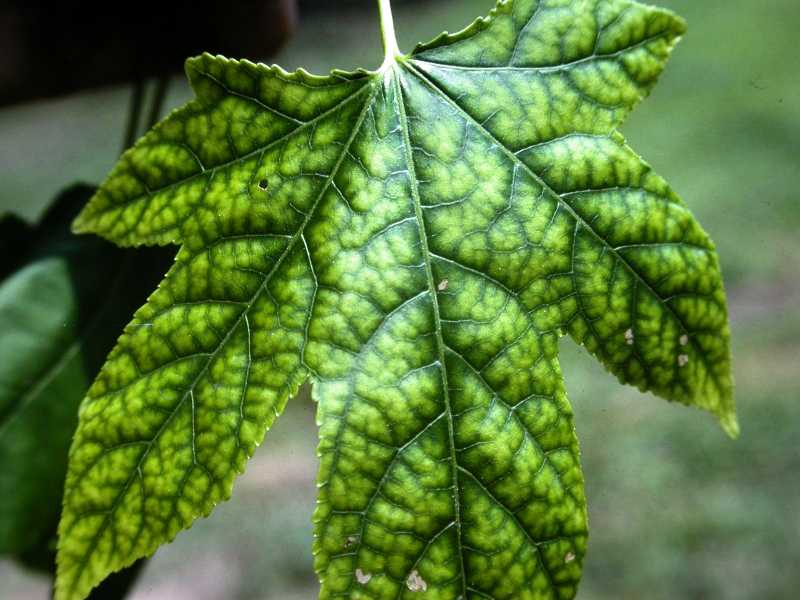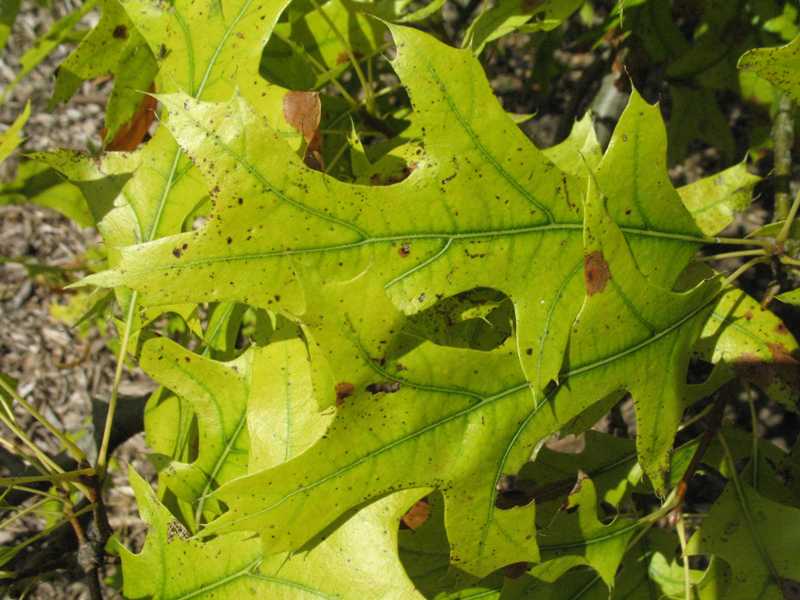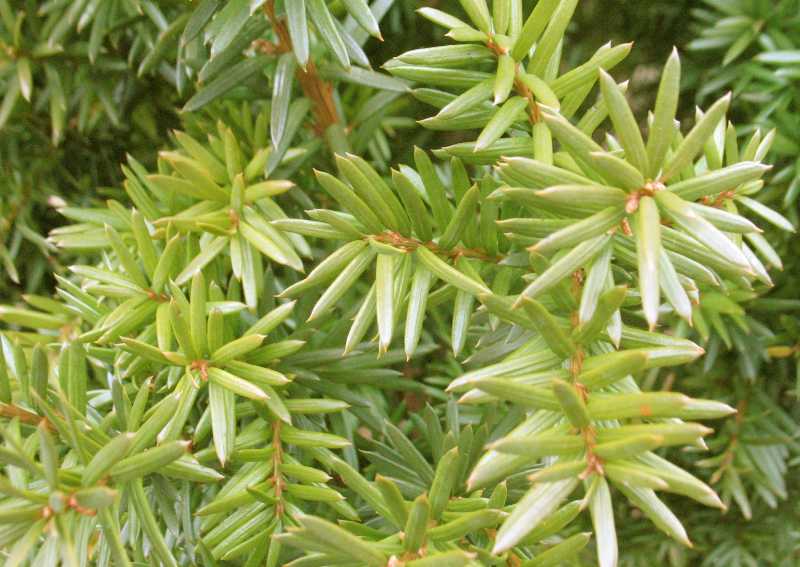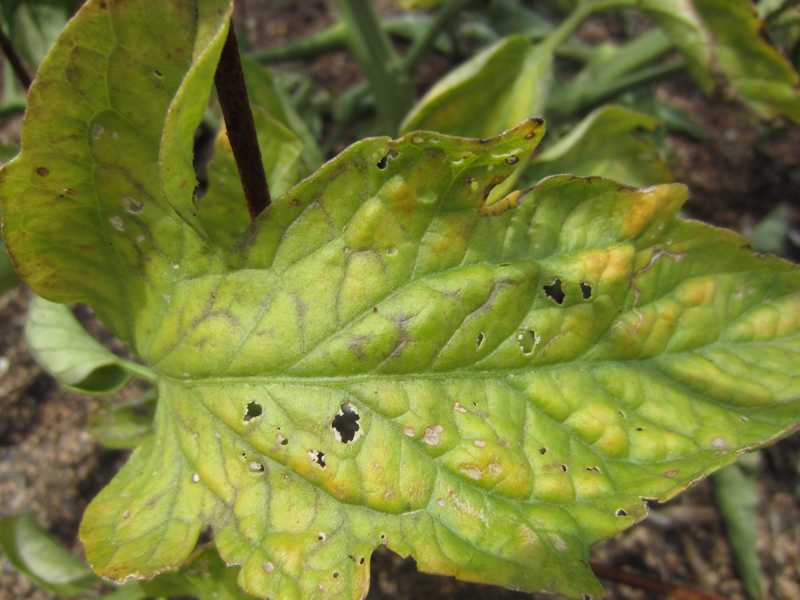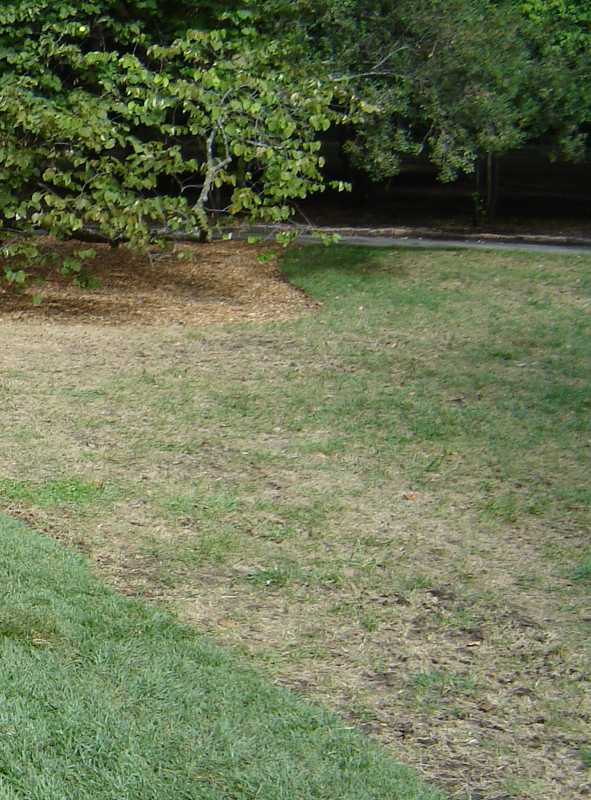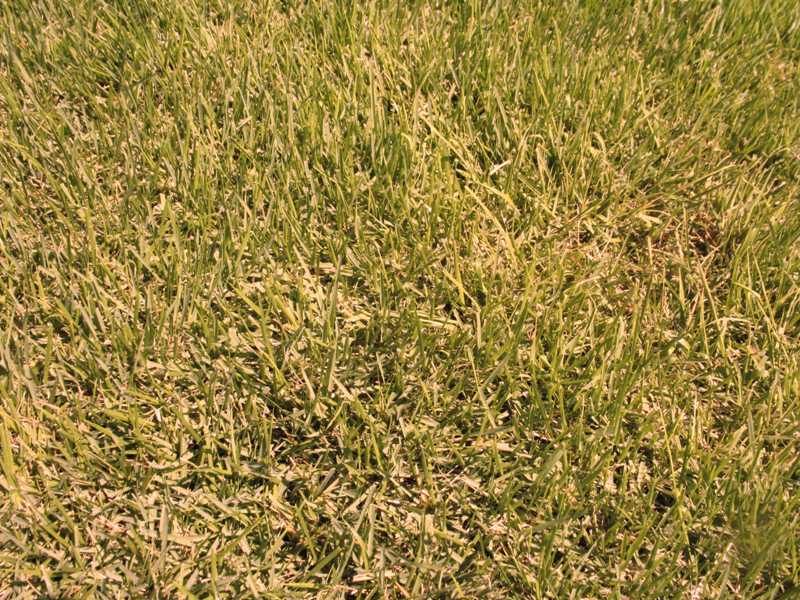Chlorosis is a general term that refers to the symptoms of uniform yellowing of leaves. It may be caused by any number of stresses including: nutrient deficiency, root damage, temperature extremes, herbicide misapplication, too much light, too little water or too much water, insect feeding, or disease pathogens.
Iron chlorosis is a common form of chlorosis. It is the result of a lack of iron in the new growth of the plant. Iron is not necessarily deficient in the soil—it may be there, but just in an unavailable form for absorption through the root system.
Symptoms and Diagnosis
The leaves of affected plants turn uniformly yellowish-green; or very commonly, they turn yellow between the veins, but the veins remain green. Yellowing is most common on new growth. The new growth may be stunted. In severe cases, leaves may die and drop prematurely. Twigs and branches may experience stunting and dieback, and plants may fail to produce flowers or fruit.
Yellowing is fairly certain to be due to iron chlorosis if the leaf veins remain green on the otherwise yellow leaf, and the chlorosis appears first on the younger or terminal leaves, spreading later to the lower parts of the plant. Iron chlorosis is most common on pin oak, sweet gum, and river birch trees as well as rhododendrons and azaleas.
Integrated Pest Management Strategies
1. Monitor the problem. Many factors can cause leaves to become chlorotic. Therefore, before assuming the problem is lack of iron, have the problem diagnosed. Weather conditions and extreme changes in soil moisture may induce temporary symptoms of yellowed leaves. These symptoms may disappear as conditions normalize. Persistent chlorosis, however, needs attention. Plants commonly associated with chlorotic symptoms include holly, hydrangea, apple, blackberry, blueberry, cherry, grape, arborvitae, birch, boxwood, lilac, rhododendron, azalea, sweet gum, pin oak, and other oaks.
2. Use a foliar feeding for temporary results. Spraying the foliage with an iron compound will correct leaf chlorosis temporarily. Iron sulfate, iron chelate, and soluble organic iron complexes are used. Spraying will not affect leaves produced later in the season. Several sprays at intervals of 2 or 4 weeks may be needed to keep developing foliage green. The corrections will last only one season and will not change the underlying deficiencies that are soil-related.
3. Give your plants good growing conditions. Longterm correction of iron chlorosis requires good soil. Improve the soil surface by mulching with 2–4 inches of organic materials such as leaf mulch or compost. Also, ensure good drainage. The soil pH should be measured with a soil test. An alkaline soil is often the cause of iron chlorosis because it limits the solubility of iron in soil water.
4.Adjust the soil pH to make the iron available.The best long-range solution for correcting iron chlorosis in soils that are too alkaline is to make the soil more acid by lowering the soil pH. A pH of 6.0 to 6.5 is desirable for most plants. As low as 4.5 is recommended for azaleas, rhododendrons, and blueberries.
The soil can be made more acid by the addition of sulfur, aluminum sulfate, or iron sulfate. Iron chelates, ferrous sulphate, aluminum sulphate, or sulfur can simply be spread on the soil surface and allowed to dissolve into the soil by watering and rainfall. This method requires more material, but is practical and feasible for the home gardener and may last several seasons, though the initial results are slow.
Quicker effects may be seen if the chemicals are worked into the soil taking care not to cultivate too deeply so as to damage plant roots. Another method is to use water-soluble materials which can be injected into the soil with a root feeder.
An excellent technique for solving chlorosis problems has been developed by Dr. Carl Whitcomb of Lacebark Inc in Stillwater, Oklahoma. His directions from his website are included here with his permission Solving Chlorosis Problems and Total Nutrition for Trees.
5. Trunk implantation and injection. Implanting or injecting an iron chelate or iron sulfate directly into the trunk of the tree through holes is often effective in 10-30 days and may be effective up to 4-5 years, for iron sulfate some arborists report, before retreatment is needed. This method is employed by professional arborists and is quick, neat, and safe. However, it is only used when the plant has little or no dieback as a result of iron chlorosis.
Organic Strategies
Strategy 1 is a strictly organic approach. Strategies 2, 3, and 4 can be approached organically if organic fertilizers and nutrients are used. Consult the Organic Materials Review Institute (OMRI™) for appropriate organic products.
More images:
|
|
||||
|
|
||||
|
|
||||
|
|
||||
|
|
||||
|
|

